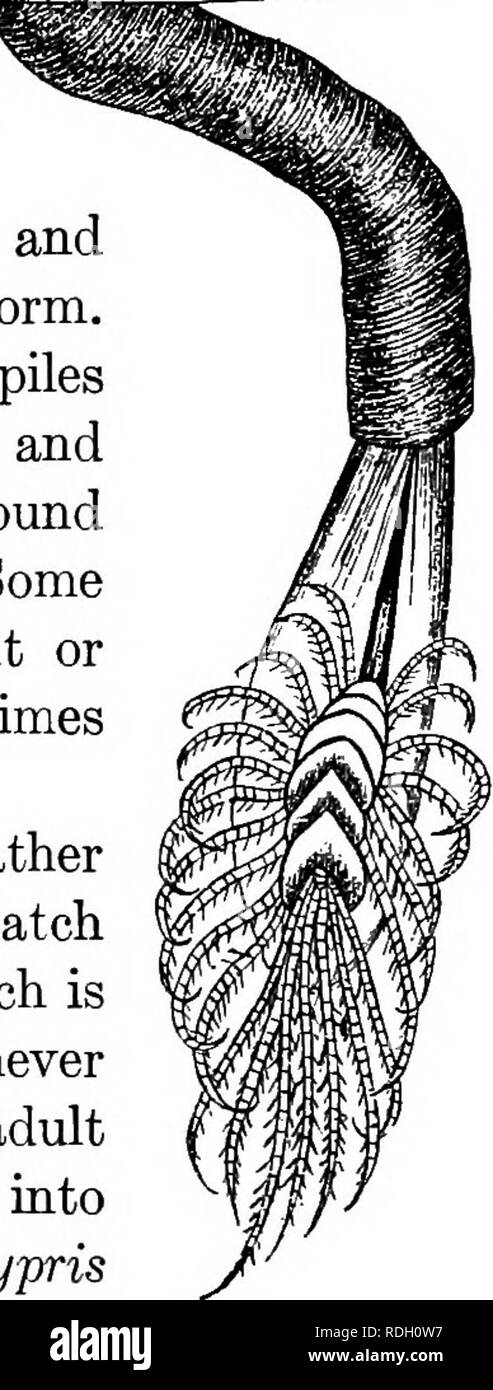. A textbook in general zoology. Zoology. 136 CRAYFiSH, LOBSTERS, SPIDERS, AND INSECTS while the opposite end is firmly attached to some sub- merged object. The body of the barnacle is inclosed in a sort of bivalved shell which, in reahty, is composed of five distinct pieces so arranged ,^---.-,-.^w-<aiE=v:;--.â-;â .. that they form two valves, .^^^^^^^^^^^^^^^^^ âhence the bivalved ap- pearance, by which the barnacles re- semble clamlike mollusks. The acorn barnacles have no stalk and resemble low, blunt pyramids in form. They are found attached to rocks and piles between tide marks, to s

Image details
Contributor:
The Book Worm / Alamy Stock PhotoImage ID:
RDH0W7File size:
7.2 MB (337.8 KB Compressed download)Releases:
Model - no | Property - noDo I need a release?Dimensions:
974 x 2566 px | 8.2 x 21.7 cm | 3.2 x 8.6 inches | 300dpiMore information:
This image is a public domain image, which means either that copyright has expired in the image or the copyright holder has waived their copyright. Alamy charges you a fee for access to the high resolution copy of the image.
This image could have imperfections as it’s either historical or reportage.
. A textbook in general zoology. Zoology. 136 CRAYFiSH, LOBSTERS, SPIDERS, AND INSECTS while the opposite end is firmly attached to some sub- merged object. The body of the barnacle is inclosed in a sort of bivalved shell which, in reahty, is composed of five distinct pieces so arranged _, ^---.-, -.^w-<aiE=v:;--.â-;â .. that they form two valves, .^^^^^^^^^^^^^^^^^ âhence the bivalved ap- pearance, by which the barnacles re- semble clamlike mollusks. The acorn barnacles have no stalk and resemble low, blunt pyramids in form. They are found attached to rocks and piles between tide marks, to ship bottoms, and some species, at least, are sometimes found attached to the bodies of whales. Some species of acorn barnacles grow eight or nine inches in length and are sometimes eaten for food. The life history of barnacles is rather complex. The adult lays eggs that hatch into queer Httle animals, each of which is called a naupUus, which one would never imagine to be connected with an adult barnacle. After a time this changes into another and different form called the cypris form. Finally this, through successive changes, develops into the adult barnacle. Barnacles are pecuhar in having no heart and no distinct blood vessels. Shrimps. âThe shrimps are very closely related to the lobsters and crayfish, and are also of considerable impor- tance as an article of food. The common shrimp occius in abundance on the eastern coast of North America, from. Fig. 73. âStalked barnacle.. Please note that these images are extracted from scanned page images that may have been digitally enhanced for readability - coloration and appearance of these illustrations may not perfectly resemble the original work.. Herrick, Glenn W. (Glenn Washington), 1870-1965. New York, Cincinnati [etc. ] American Book Company